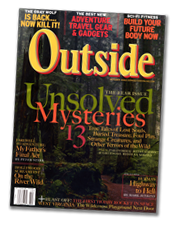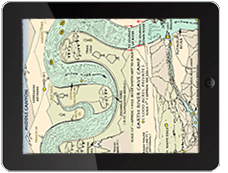Every experience we had and everything we did, we did knowing that this beautiful land might be under water someday soon. Megan Wahl, a science teacher at the Wilmington Friends School that I attend, and Eric Hertz, founder of the adventure-travel company Earth River, had brought American students together with Chileans so that we could fully understand how devastating it would be to lose one of the most beautiful and challenging rivers in the world. Our charge was to tell other kids about the plight of the Fu in an effort to save the river.
What could destroy it is this: The Endesa Power Company is attempting to get permission from the Chilean government to dam the Futaleufu. Money is the issue here. Endesa would sell hydro-electric power, produced by the dam, to neighboring Argentina. The Chilean government would profit through taxes. It would lose through the decimation of the river and its surrounding ecosystem. Damming the Fu would create a huge reservoir about 30 miles long and six miles wide that would flood the surrounding forest. Farmers, ranchers, and townspeople who live along the river would lose their land, their homes, their ways of life. The depth of this reservoir would make the water temperatures drop, destroying the Futaleufu's world-class salmon fishing. Its wild string of Class III, IV, and V rapids would sink beneath a glassy surface. Increasingly, the rapids of the Fu are what attract adventurers from all over the globe—adventurers like us who come to Chile and pump tourism dollars into the local economy. More and more, tourism is being offered as a viable solution to promote Chile's economic development without destroying the Fu.
From inside our raft, the rapids actually looked rather small, but as we bore down on the Class IV churns, water was literally exploding off the boulders. Every time I put my oar into the brink, I had to fight the river for control over it. Suddenly Beth shouted, “Hold on!” I looked up into a huge wall of water. One instant I was secure in my seat at the front of the raft, the next lying on the deck in the back. I thought of the drop of water I had earlier dripped on my neck for luck. Maybe that's what had kept me in the boat.
Although there was a language barrier, we were able to meet many locals who live along the river. Many of them earn a good living as guides, drivers, and cooks for Earth River and other adventure-travel companies. One of the highlights of the trip was getting to know the two Chilean girls. With a little patience and a lot of sign language we developed some games and even some jokes.
One day we stopped for lunch on the river and met a Chilean woman who had roasted an entire lamb for us. A complete carcass roasting over an open fire gave the vegetarians among us pause, but we all appreciated the gesture of hospitality. She had also knitted gifts of wool socks for everyone on the trip because she was so happy that we had come to Chile to help save her home.
Help is the key word here, because the last thing Chileans need is a bunch of Americans telling them what to do with their river, especially considering that we have dammed so many rivers of our own. But we can show our support and help raise money to fund the fight. Other than that, we can encourage people living in the areas to fight for the Fu. They will be the ones most affected by the dam, so they should have the most say.
The fight is just beginning and this trip seems to have been a step in the right direction. Suj ey's father, the local justice of the peace (he can marry people and he oversees local contracts), is an influential member of the town of Futaleufu. He had been an ardent supporter of the dam. Suj ey's tale of our trip down the Futaleufu and the logic of including tourism in future plans for Chile's economic development, however, actually convinced him that the river may be financially worth saving. Given a chance to show people its beauty and value, nature can be pretty convincing. Kids can be pretty convincing, too.
Hertz plans to run trips down the Fu until every Chilean kid in the area has had a chance to experience the river. So if you're interested in seeing the Fu for yourself, call Earth River at (800) 643-2784. It's expensive—about $2,000—but get busy and start mowing some lawns.


 "Save the Fu"
"Save the Fu"